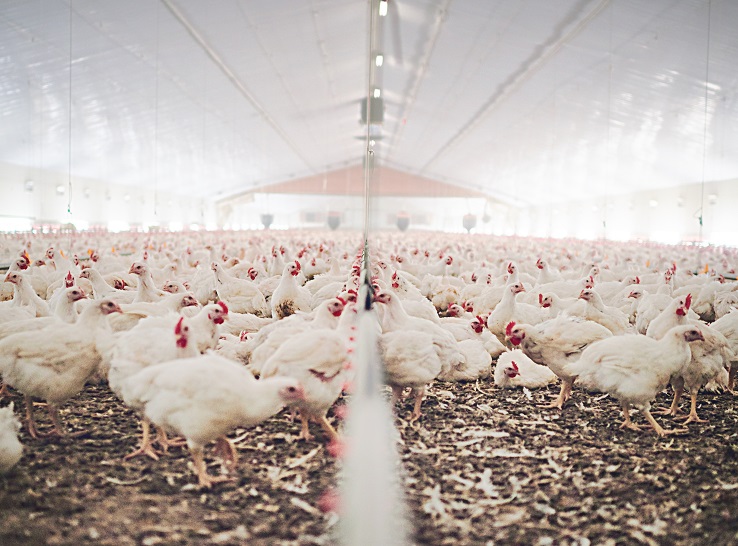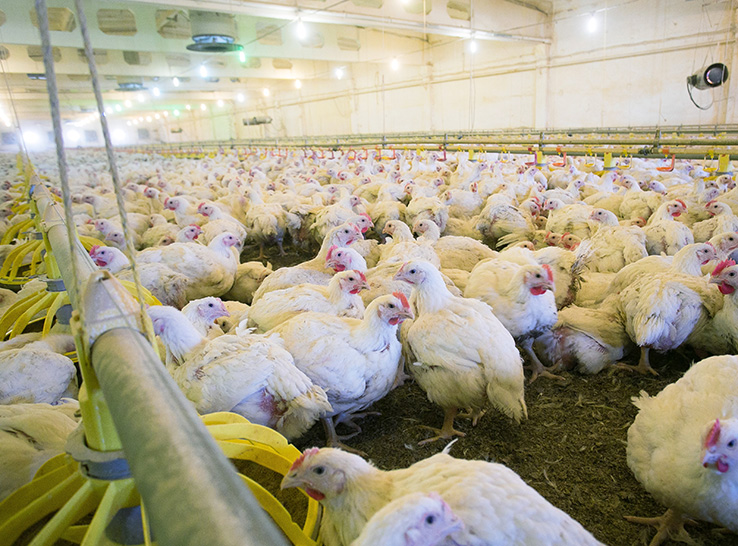In the face of threats such as highly pathogenic avian influenza (HPAI), one of the most pressing challenges for the poultry industry is to continually evaluate and improve depopulation strategies.
This is essential to prevent or mitigate the spread of HPAI by eliminating infected or potentially infected poultry as effectively and humanely as possible under the circumstances.
Research is helping the industry meet this challenge by evaluating depopulation treatments. Kari Harding, PhD, North Carolina State University, presented key findings from one of the latest depopulation studies at the 2024 Poultry Science Association annual meeting.
“When HPAI and other challenges requiring depopulation occur, we need to be ready,” Harding said. “If the experiences we’ve had have taught us anything, it’s that you can never be too prepared.
“We have options available that have helped in past situations. We want to continually evaluate and improve those options as we move into the future. Research is an important tool to help us accomplish this.”
Expanding the toolkit
Harding presented findings from a study she conducted with colleagues that evaluated three depopulation methods:
- Ventilation shutdown plus heat (VSDH)
- Ventilation shutdown plus CO2 (VSCO2)
- Ventilation shutdown plus heat plus relative humidity (VSDHrh)
The first two methods — VSDH and VSCO2 — were approved by the American Veterinary Medical Association under its depopulation guideline from 2019 and are currently used in the industry. VSCO2 is the faster of these two methods.
The third method — VSDHrh — is new and has shown promise as an alternative to VSCO2, with the potential to make VSDH depopulation quicker without adding stress to the birds.
“I want to emphasize that time is the major goal for depopulation,” Harding said. “You want to reduce the time as much as possible while considering the birds’ stress and welfare as much as you can.”
Study design
The researchers designed a two-phase study to compare VSDHrh to VSDH and VSCO2. They hypothesized that VSDHrh would provide faster time of death (TOD) than VSDH without any added stress as indicated by changes in blood chemistry.
Phase one focused on determining the birds’ average TOD and providing a baseline for evaluating changes in blood chemistry.
Phase two involved a replication designed to monitor the progression of the birds’ responses from the time they were placed in the chamber until they were removed, with evaluation at several time intervals during this period.
“The study design allowed us to look at the progression of the blood chemistry throughout the process,” Harding explained.
Both phases were conducted in environmentally controlled chambers. All birds used were at 42 days old. In phase one birds were evaluated under each of the three treatments, plus a control (four chambers, each with four birds, each with one of the four treatments).
Phase one used 12 broilers in total. Phase two used 30 birds total for a replication for each removal time.
The researchers collected blood from the birds before and after placing them into the chamber and immediately after the treatments once they were removed.
Immediately after blood collection, the research team used a point-of-care blood analyzer to determine any blood gas or chemistry changes. The parameters they analyzed are listed below:
- pH
- Partial pressure of the CO2 (PCO2)
- Partial pressure of O2 (PO2)
- Base excess and extracellular fluid
- Bicarbonate
- Total CO2 (TCO2)
- Specific O2 (SO2)
“It’s important to understand how these methods impact the broilers and their stress levels,” Harding said. “To do this, sometimes blood chemistry is used. Several heat stress studies have shown increases in blood pH and blood glucose and decreases in bicarbonate, CO2 and potassium.”
Key findings
The research team observed that average TOD was significantly lower with VSDHrh than VSDH. The control and VSCO2 groups had relatively similar TOD.
Among key blood-chemistry metrics, the researchers did not see any significant difference between the potassium or glucose levels among the different treatments. However, sodium levels were significantly higher with the VSDHrh treatments than with the other two treatments.
“This could be because the birds were panting a little bit more trying to dissipate that heat and potentially becoming more dehydrated, so you see those elevated levels of sodium,” Harding said.
For TCO2, PCO2, PO2, bicarbonate and SO2 percentages, the researchers found significantly higher levels of each of these under VSDCO2 compared to VSDHrh. However, Harding explained, this is attributable to increased CO2 inhalation. No other significant differences were found.
Positive indications
“Overall, we found the results promising,” Harding said. “They indicate our VSDHrh treatment may be a suitable method for the industry to use for depopulation. The blood-chemistry difference of higher sodium is attributable to an increased level of panting to dissipate the heat, while the increased levels of all other parameters were due to CO2 inhalation.”




